Even at a time like this, the street is bright enough and filled with people coming and going—people with places to go and people with no place to go; people with a purpose and people with no purpose; people trying to hold time back and people trying to urge it forward.
After Dark
Haruki Murakami is often described as one of the world’s greatest living novelists and has been compared with the likes of J.D. Salinger (he even translated The Catcher in the Rye into Japanese). His depictions of the loneliness and isolation of modern Japanese life ingratiated him with the country’s youth who often struggle to assert their individuality in the face of societal notions of conformity.
However, such comparisons fail to do justice to his unique brand of surreal fantasy and urban realism, which seamlessly blends dream, memory, and reality against the backdrop of everyday life in Japan. Cats talk to humans, and twin moons appear in the sky, while at the same time, people cook pasta and worry about missed phone calls. The banal frequently meets the otherworldly, questioning conventional notions of reality.
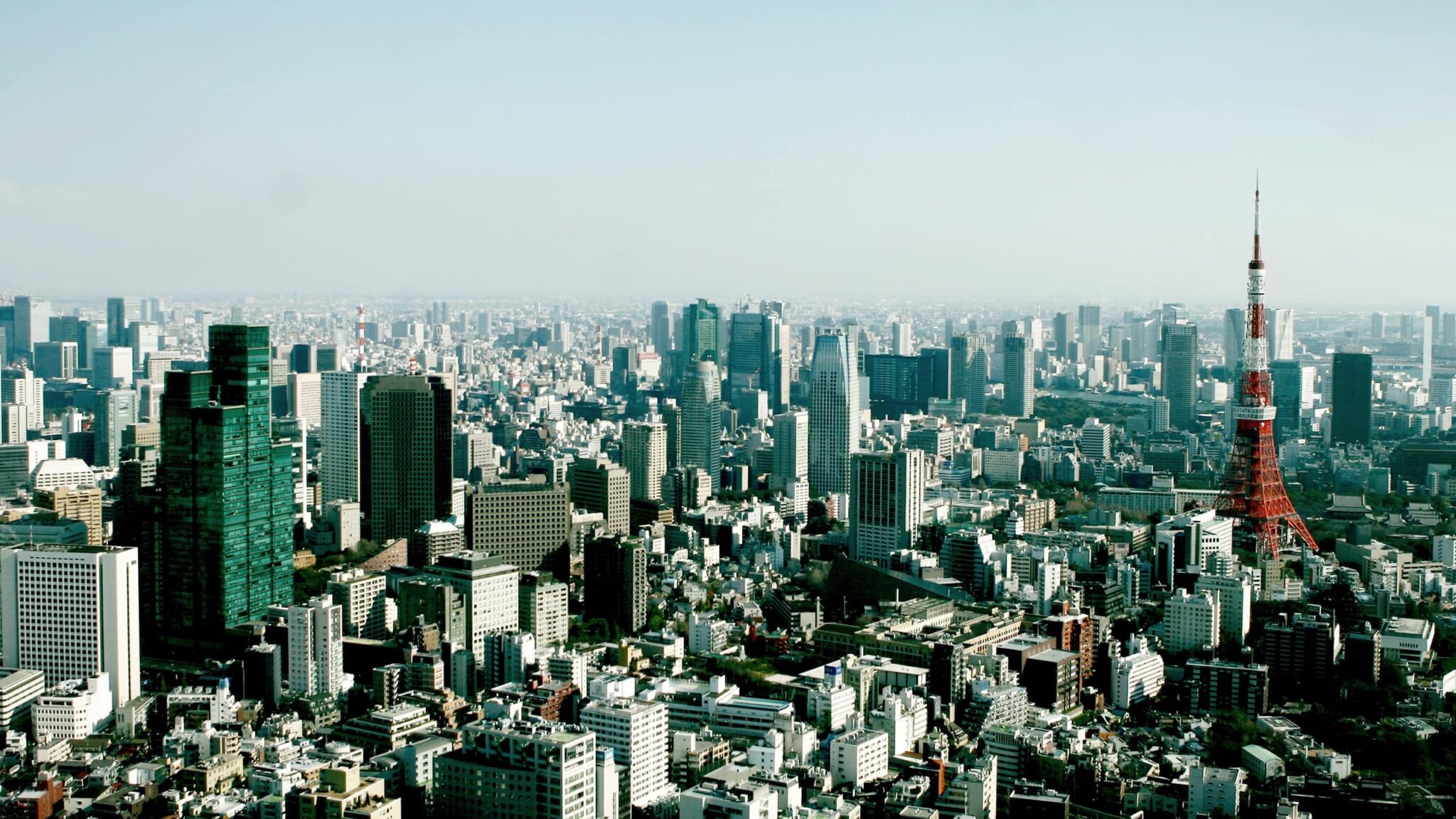
To celebrate the release of the English translation of Haruki Murakami’s latest novel, Colorless Tsukuru Tazaki and His Years of Pilgrimage, I decided to go on a pilgrimage of my own. Over a month’s worth of weekends, I explored some of the places in Tokyo that have crossed over from fact to fiction and back again throughout the pages of his surreal novels in the last 35 years.
In Part 1 we go back to the start of his own life story and visit some of the places which become so influential in his writing later on.
Denny’s (デニーズ)
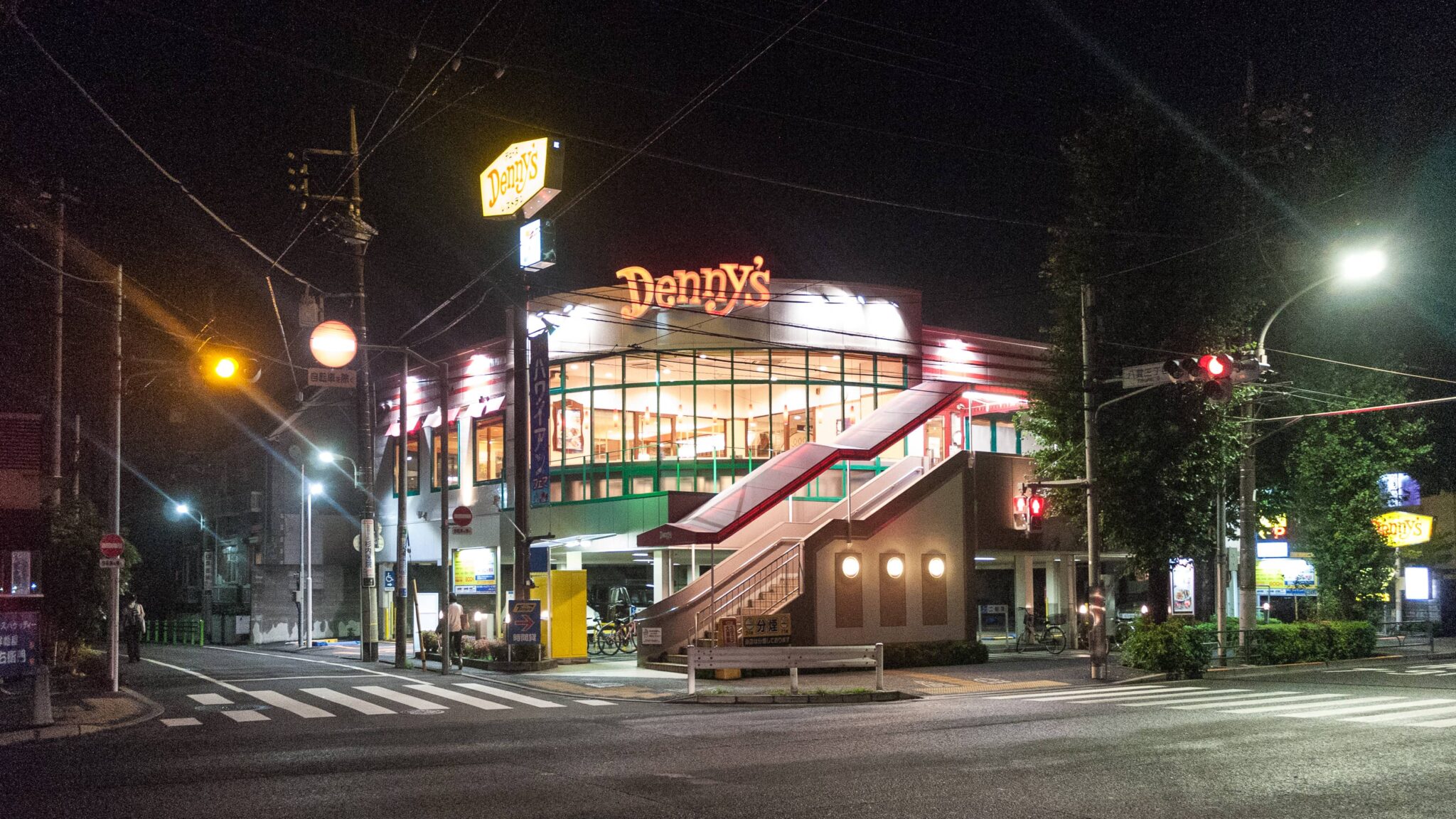
Just think about it. Wouldn’t it be too sad to walk into Denny’s and order chicken salad without looking at the menu? It’s like telling the world, ‘I come to Denny’s all the time because I love the chicken salad. So I always go through the motion of opening the menu and pretending I picked the chicken salad after considering other things.
After Dark
My journey begins at midnight in a generic branch of the American restaurant chain Denny’s. While waiting for my french toast I watch the other patrons around me; a couple with their heads down eating in silence, a salaryman absentmindedly playing with his phone, and a young woman nervously fiddling with her hair. With food as bland as the vinyl and wood-veneer furniture you sit on, this isn’t a place you come for the ambience or a fine dining experience but to kill time, or perhaps escape it…
It was here where Mari, while minding her own business, is interrupted by an old acquaintance Takahashi in After Dark (2007). Like with many of Murakami’s narratives, this chance encounter pulls her into a series of unusual events in which the rational logic of Tokyo’s daylight hours does not apply at night.
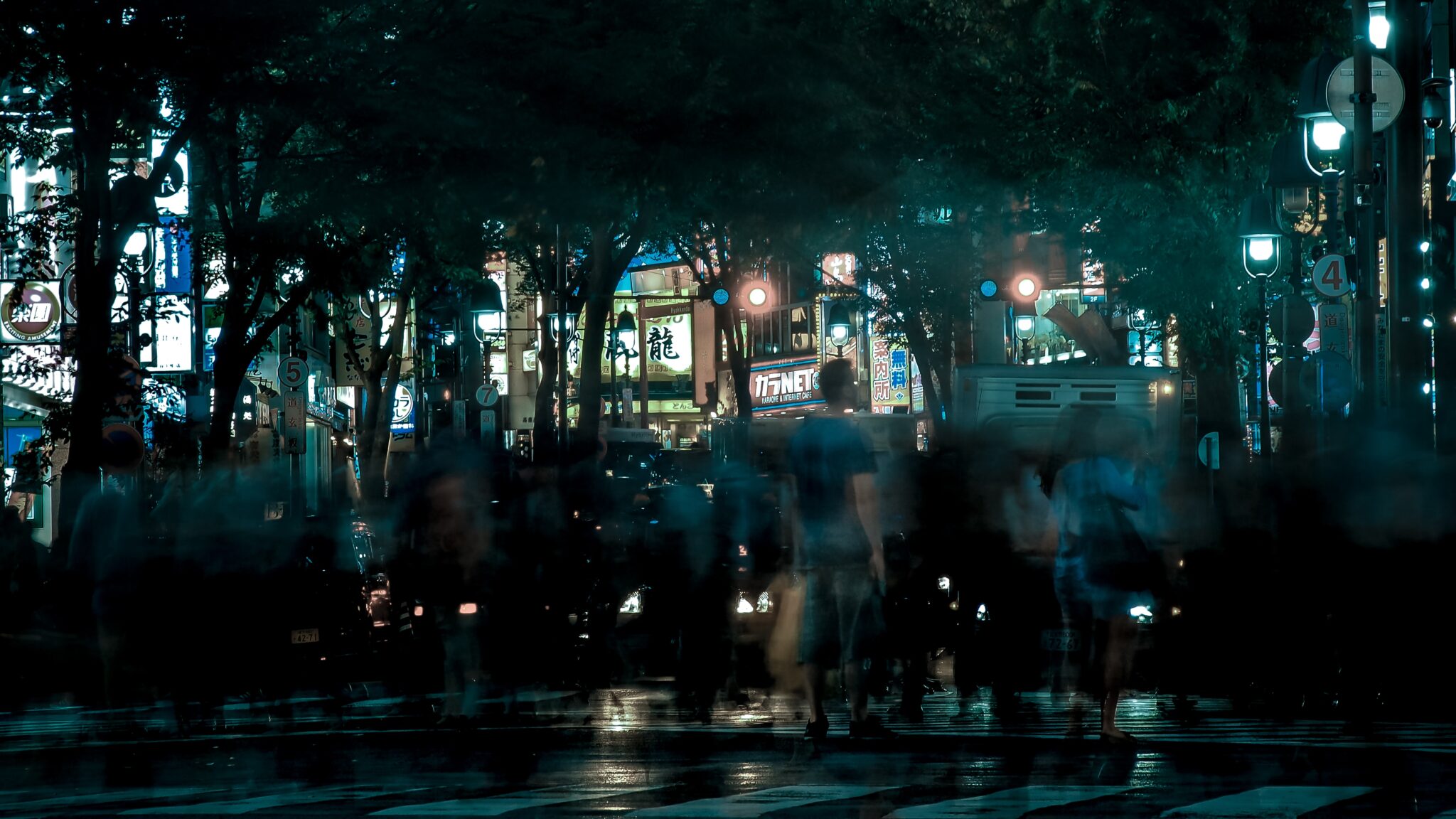
Murakami was born in Kyoto in 1949 but grew up in postwar Kobe where both of his parents taught Japanese literature. During his childhood, he was heavily influenced by Western music and literature which later had a profound effect on his writing style and distinguished him from his fellow Japanese counterparts who frequently accuse him of being “too Western“.
His books have been translated into some 42 languages and has often been mentioned as a possible recipient of the Nobel Prize in Literature.
Waseda University (早稲田大学) (1968)
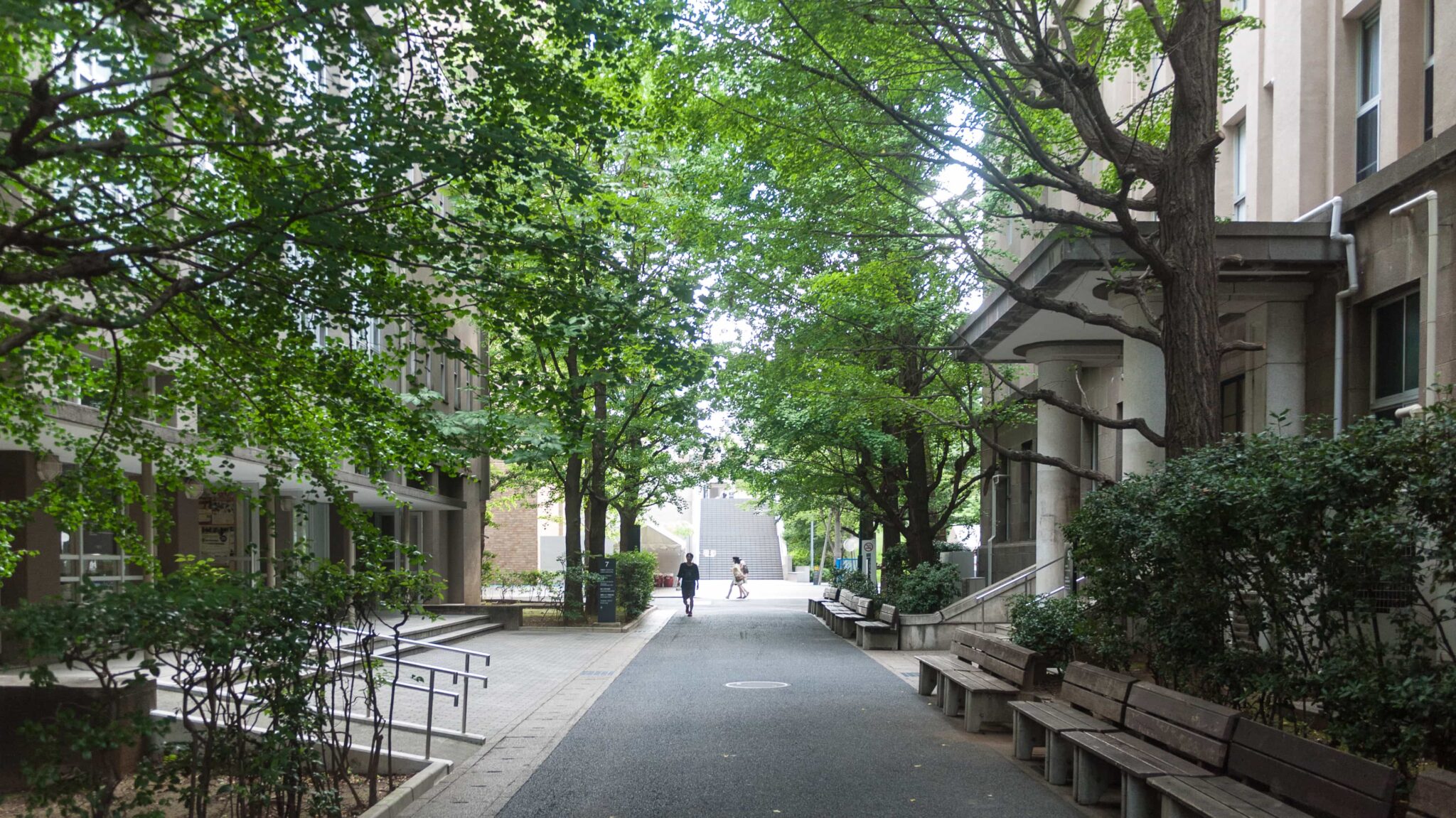
I went to the cafeteria afterwards and ate a cold, tasteless lunch alone. Then I sat in the sun and observed the campus scene.
I sat there for a long time, watching the campus and the people passing through it, and hoping, too, that I might see Midori. But she never appeared, and when the noon break ended, I went to the library to prepare for my German class.
Norwegian Wood
Murakami attended Waseda University in Tokyo, considered to be one of Japan’s most prestigious universities, where he studied drama in 1968. Its main campus in Shinjuku is a leafy affair whose buildings are an odd jumble of architectural styles, some mimicking traditional European colleges, while others are decidedly more modern.
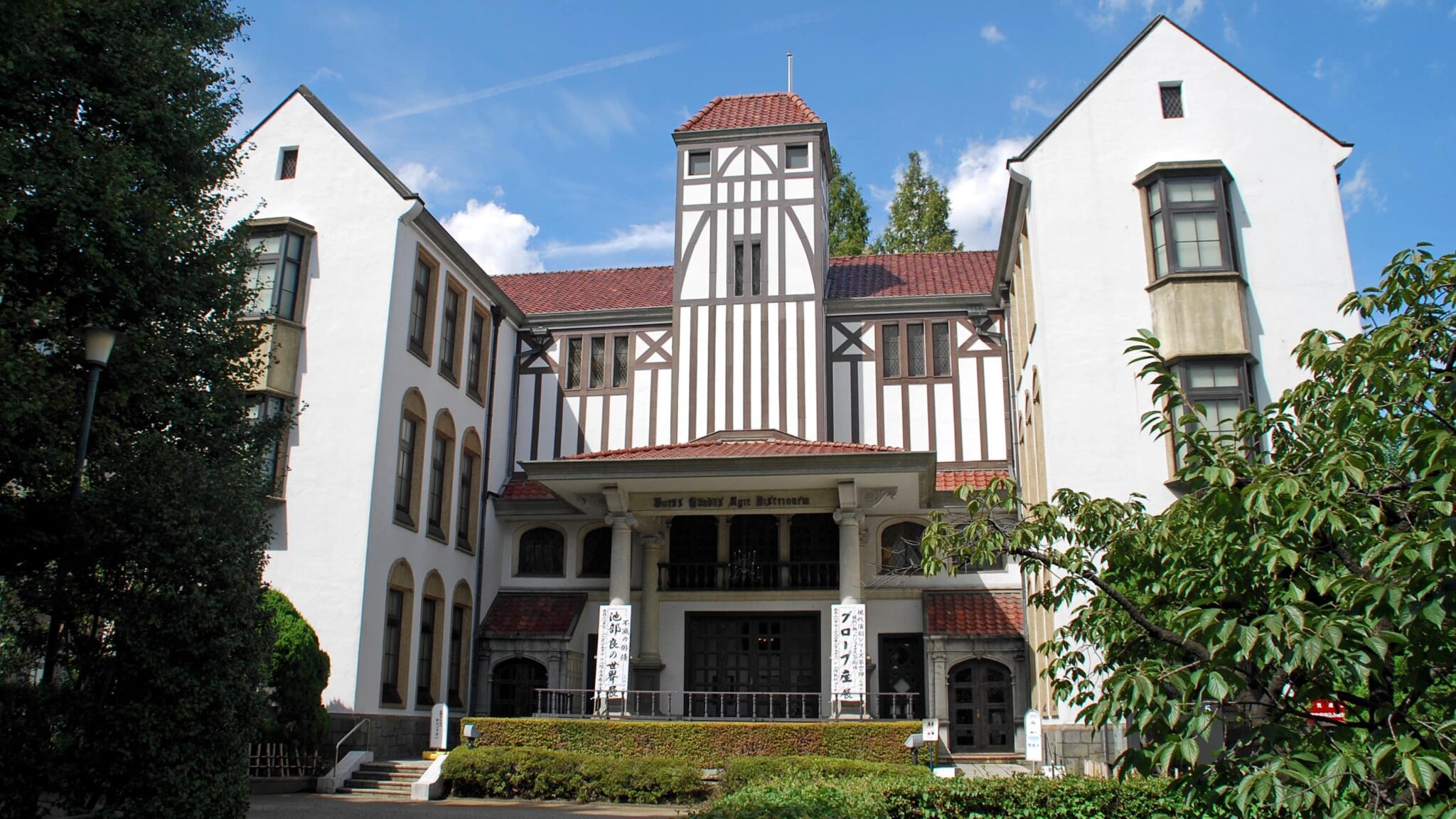
While not being terribly interested in his studies, it was at Waseda where he would spend hours reading film scripts in the Theater Museum, modelled on the historic Fortune Playhouse in London. It was also where he met his wife, Yōko Takahashi, who he married in 1971 (against his parents’ wishes at the time).
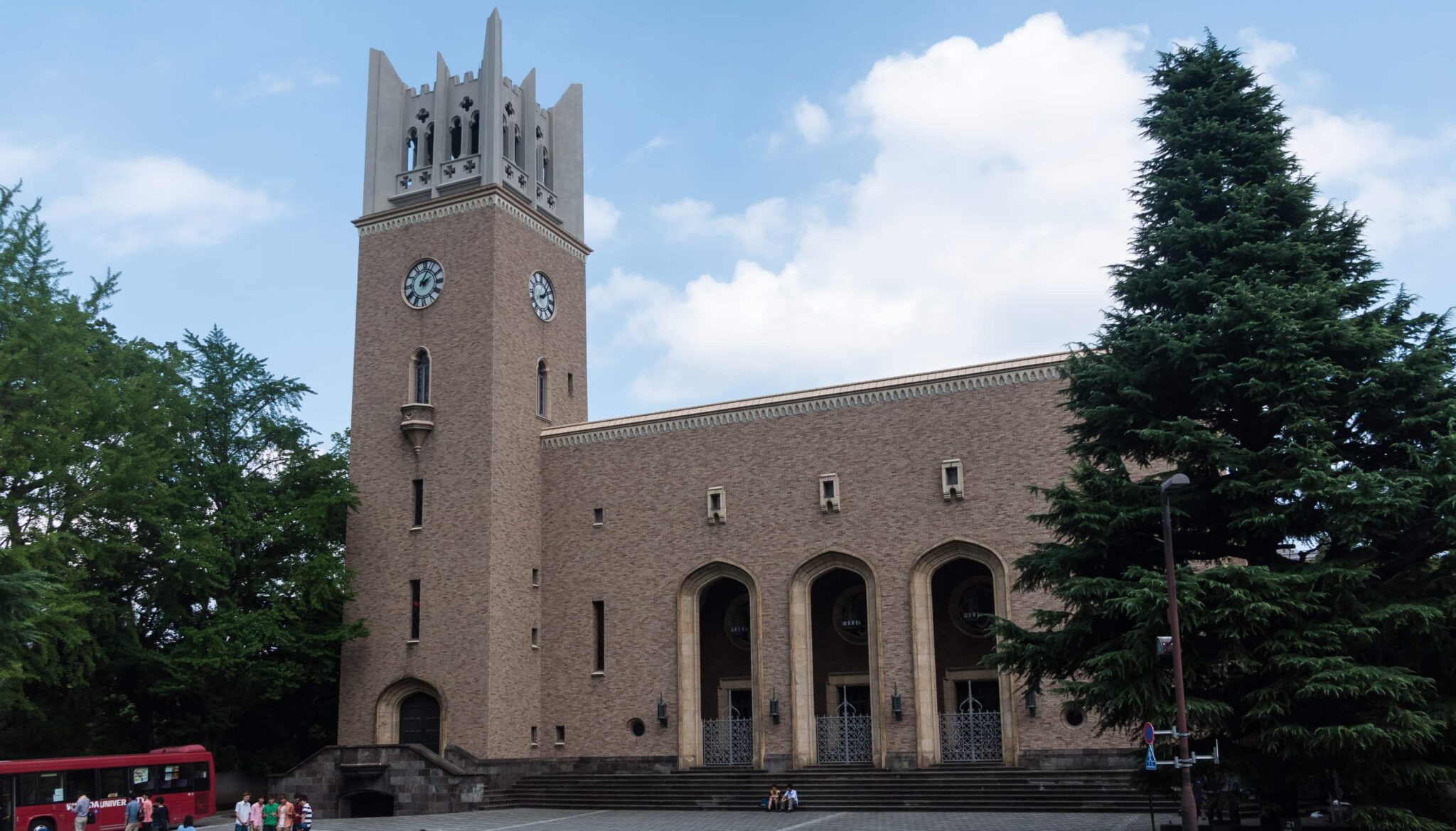
I visited the university during its annual open day for new students and it immediately took me back to my own induction to Durham where I studied a decade ago. Like Toru Watanabe, the protagonist of Norwegian Wood, I was reminded of my own naïvety at that time. It was this coming-of-age story, which was hugely popular with Japanese youth, that brought Murakami to fame in 1987.
Wakeijuku (和敬塾)
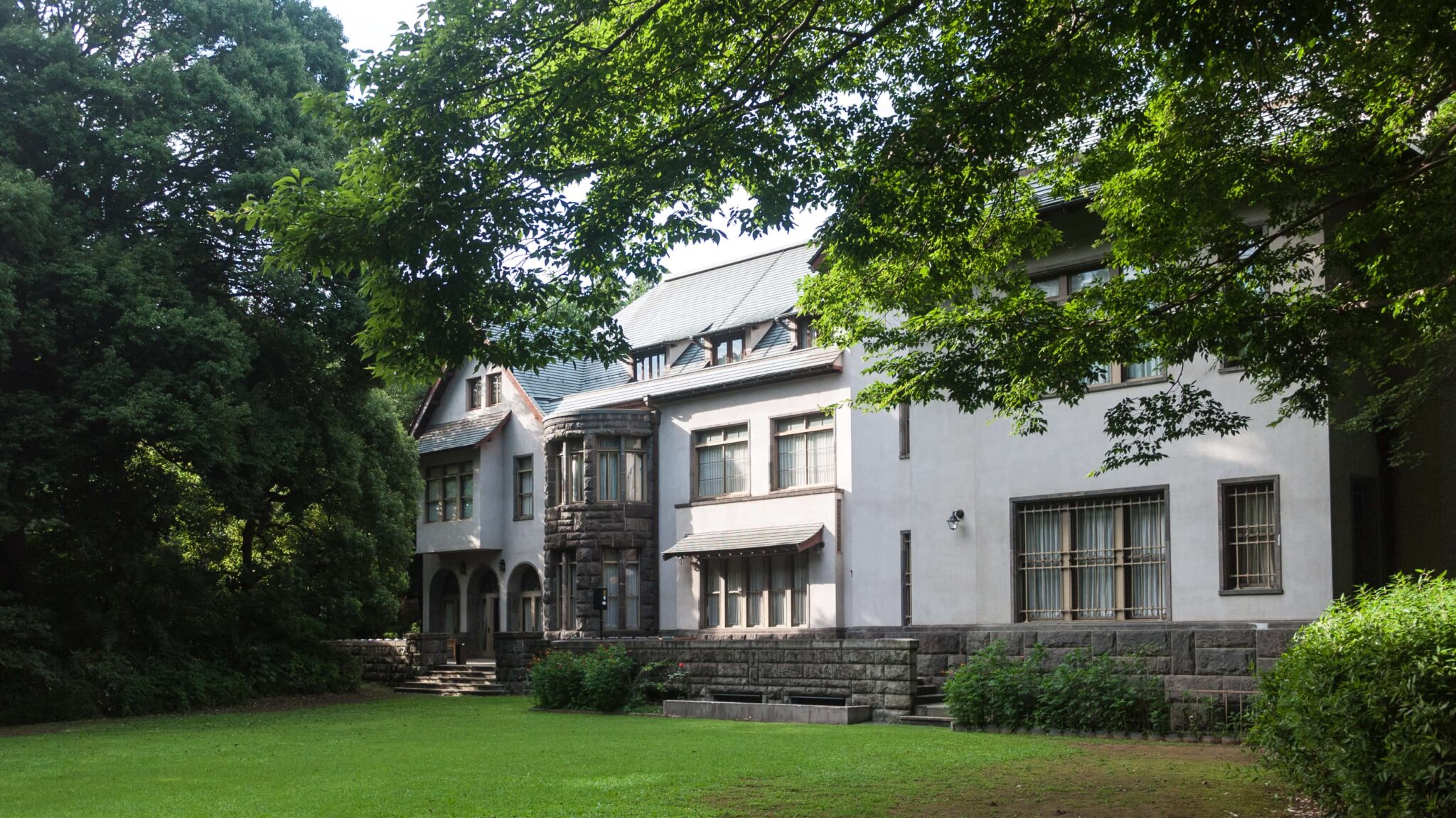
The paved path leading from the gate circumvented the tree and continued on long and straight across a broad quadrangle, two three- story concrete dorm buildings facing each other on either side of the path. They were large with lots of windows and gave the impression of being either flats that had been converted into jails or jails that had been converted into flats. However there was nothing dirty about them, nor did they feel dark. You could hear radios playing through open windows, all of which had the same cream-coloured curtains that the sun could not fade.
There was just one problem with the place: its political smell. It was run by some kind of fishy foundation that centered on this extreme right-wing guy, and there was something strangely twisted – as far as I was concerned – about the way they ran the place.
Norwegian Wood
Not far from the campus, across the cherry-tree-lined Kanda River, is the exclusive Wakeijuku all-male dormitory where Murakami lived during his first year at Waseda. Located on the spacious grounds of a former feudal lord’s mansion, the secluded setting is described in detail by Toru.
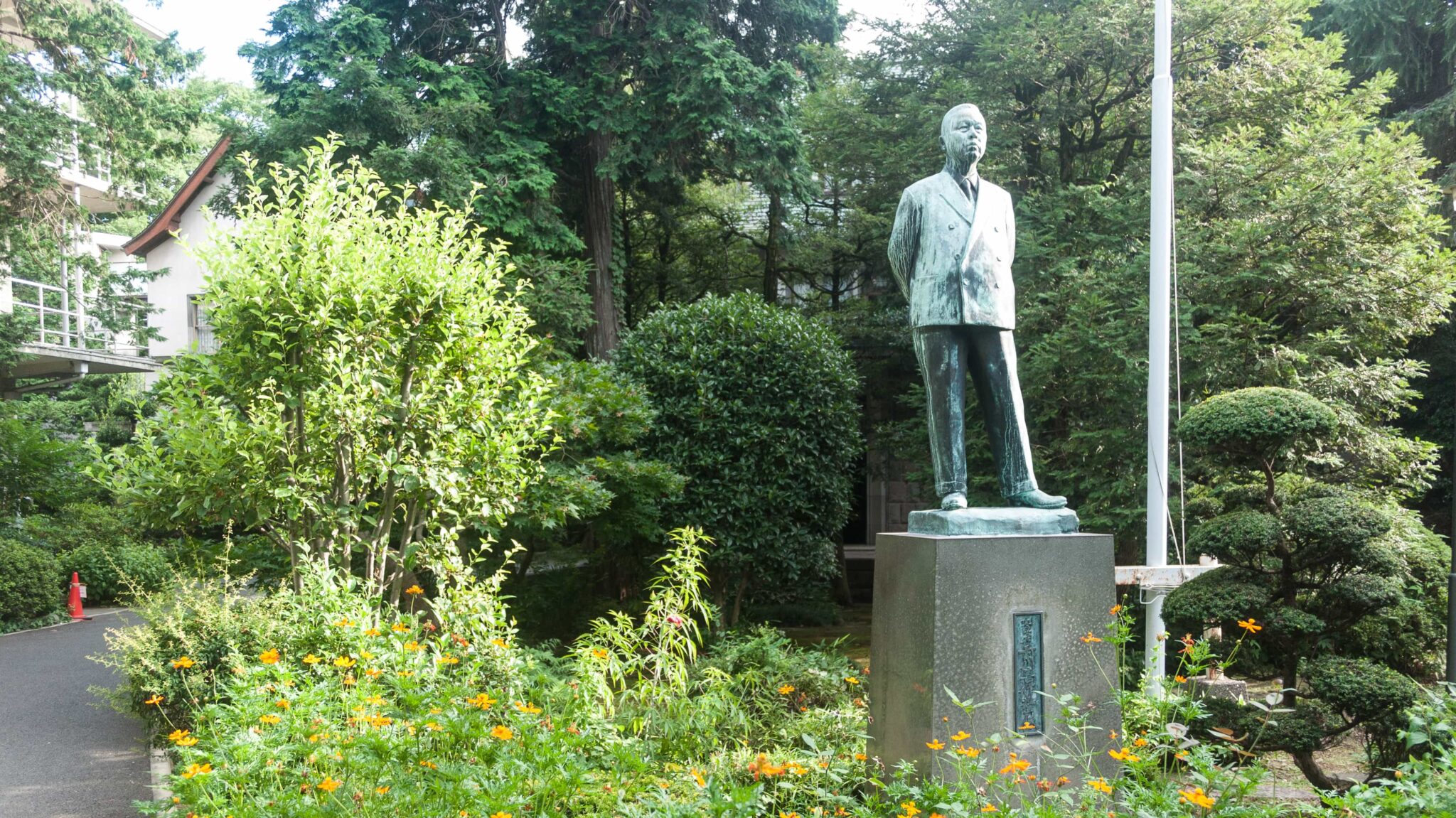
Every student I passed at Wakeijuku seemed to make a point of greeting me with a ‘konichiwa,’ which although friendly felt a little mechanical somehow. It turns out it is one of the foundations Three Rules designed to instil ‘sound intellect and moral mind needed for “to be the able man” in the society.’ Postmodern Japan it is not.
Toden Arakawa Line (都電荒川線)
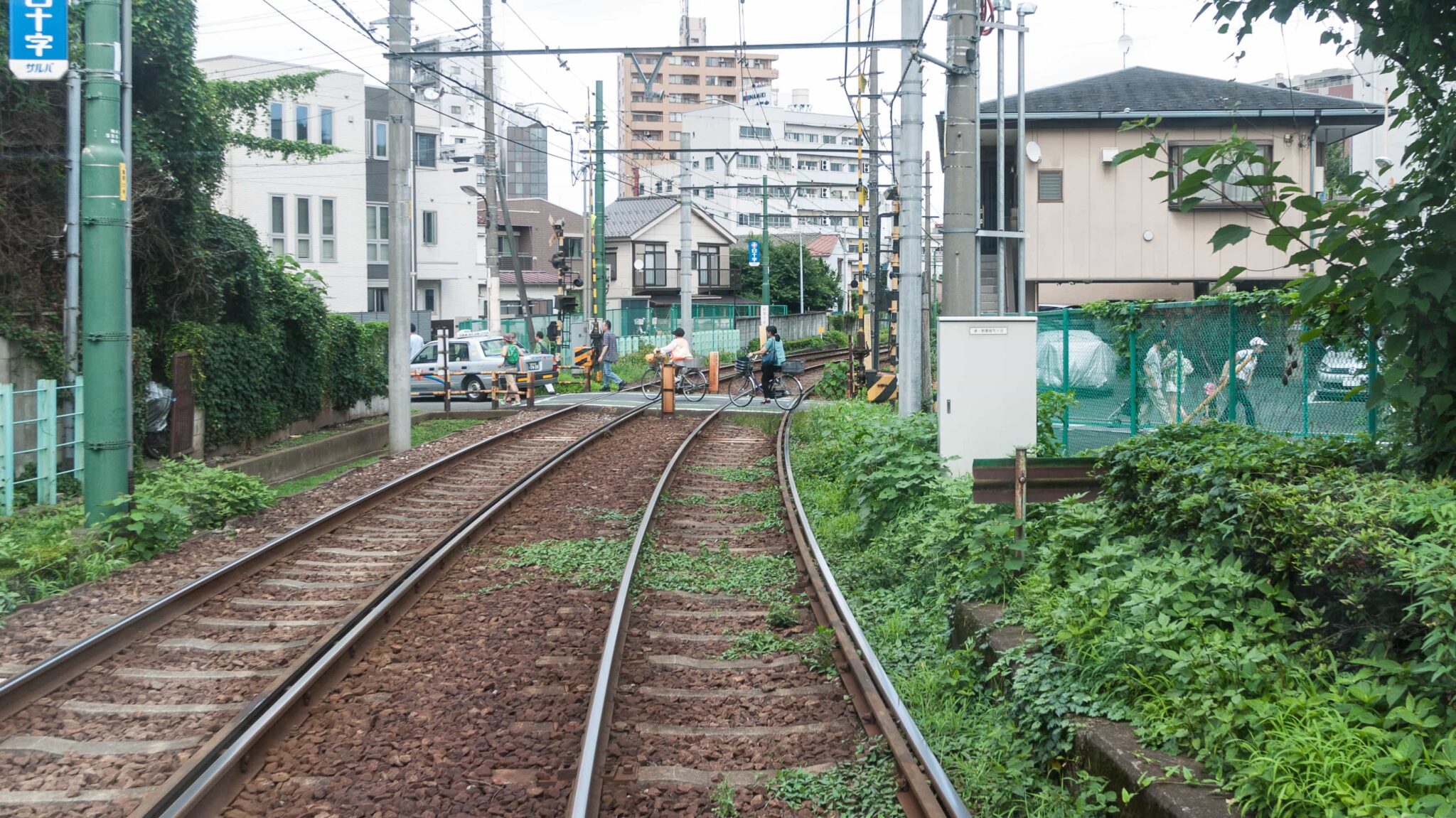
I sat in the last seat and watched the ancient houses passing close to the window. The tram almost touched the overhanging eaves. The laundry deck of one house had ten potted tomato plants, next to which a big black cat lay stretched out in the sun. In the garden of another house, a little girl was blowing soap bubbles. I heard an Ayumi Ishida song coming from somewhere, and could even catch the smell of curry cooking. The tram snaked its way through this private back-alley world.
Norwegian Wood
The Toden Arakawa Line is the sole survivor of Tokyo’s once extensive streetcar network. Its meandering route takes passengers at a gentle pace between Waseda and Minowabashi, dissecting the backstreets of many sleepy neighbourhoods along the way, affording a rare glimpse into the less glamorous side of everyday life in Tokyo.
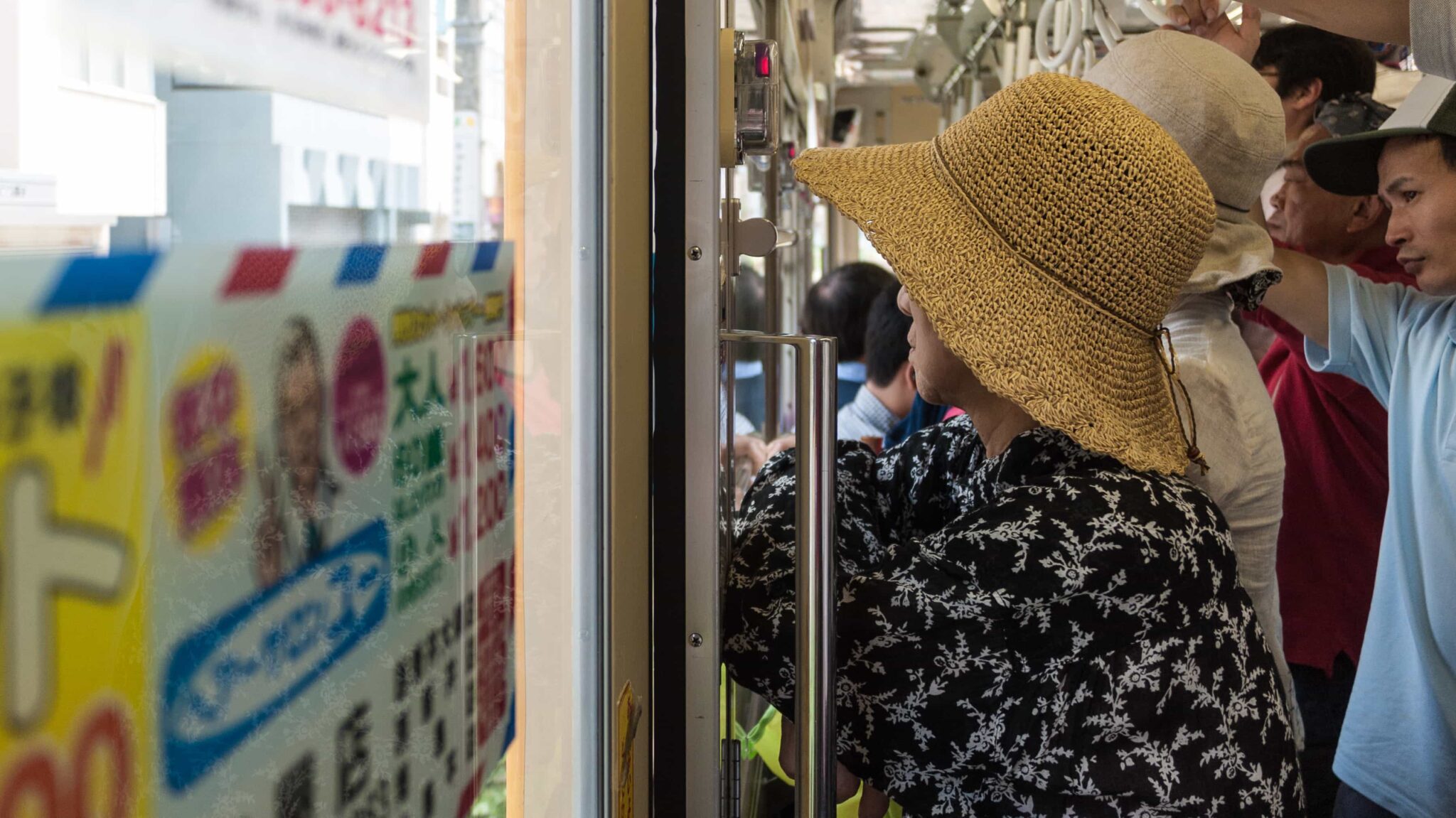
I too took a seat near the back of the tram, an elderly lady casting a disapproving look at my camera while a small child pointed at my beard and said something to her father that I couldn’t understand. As I watched the world pass by through the rear window I realised that I’d probably always be the odd one out in my adopted country.
Ōtsuka Station (大塚駅)
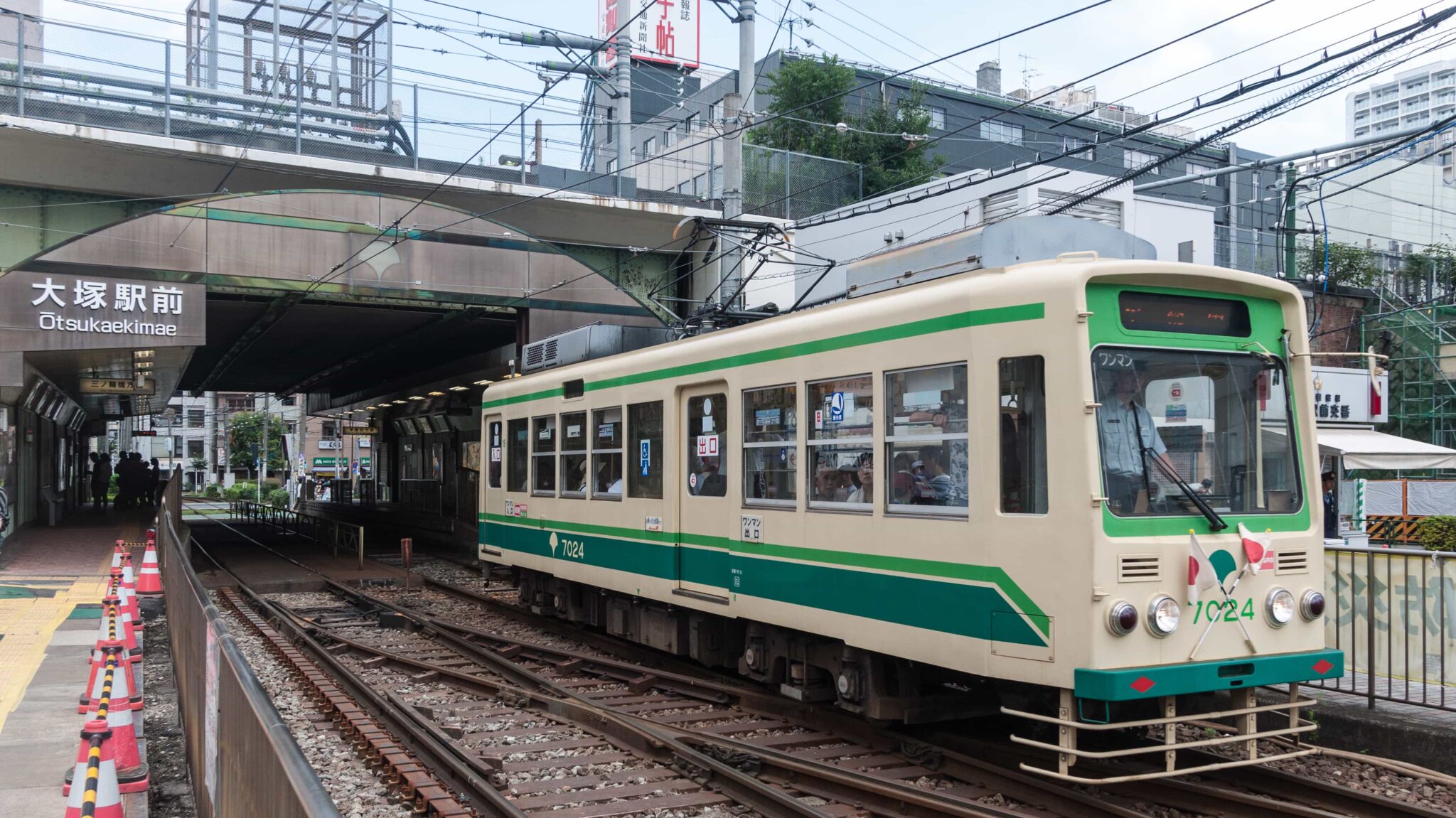
I got off near Otsuka Station and followed Midori’s map down a broad street without much to look at. None of the shops along the way seemed to be doing very well, housed as they were in old buildings with gloomy-looking interiors and faded writing on some of the signs. Judging from the age and style of the buildings, this area had been spared the wartime air raids, leaving whole blocks intact. A few of the places had been entirely rebuilt, but just about all had been enlarged or repaired in places, and it was these additions that tended to look shabbier than the old buildings themselves.
Norwegian Wood
While not quite as depressed as Toro’s description, the neighbourhood of Ōtsuka certainly isn’t anything to get excited about. The only thing which caught my eye while wandering its quiet streets was an outpost of the creepy Scientology cult hiding down a side street. I declined a “free personality test”.
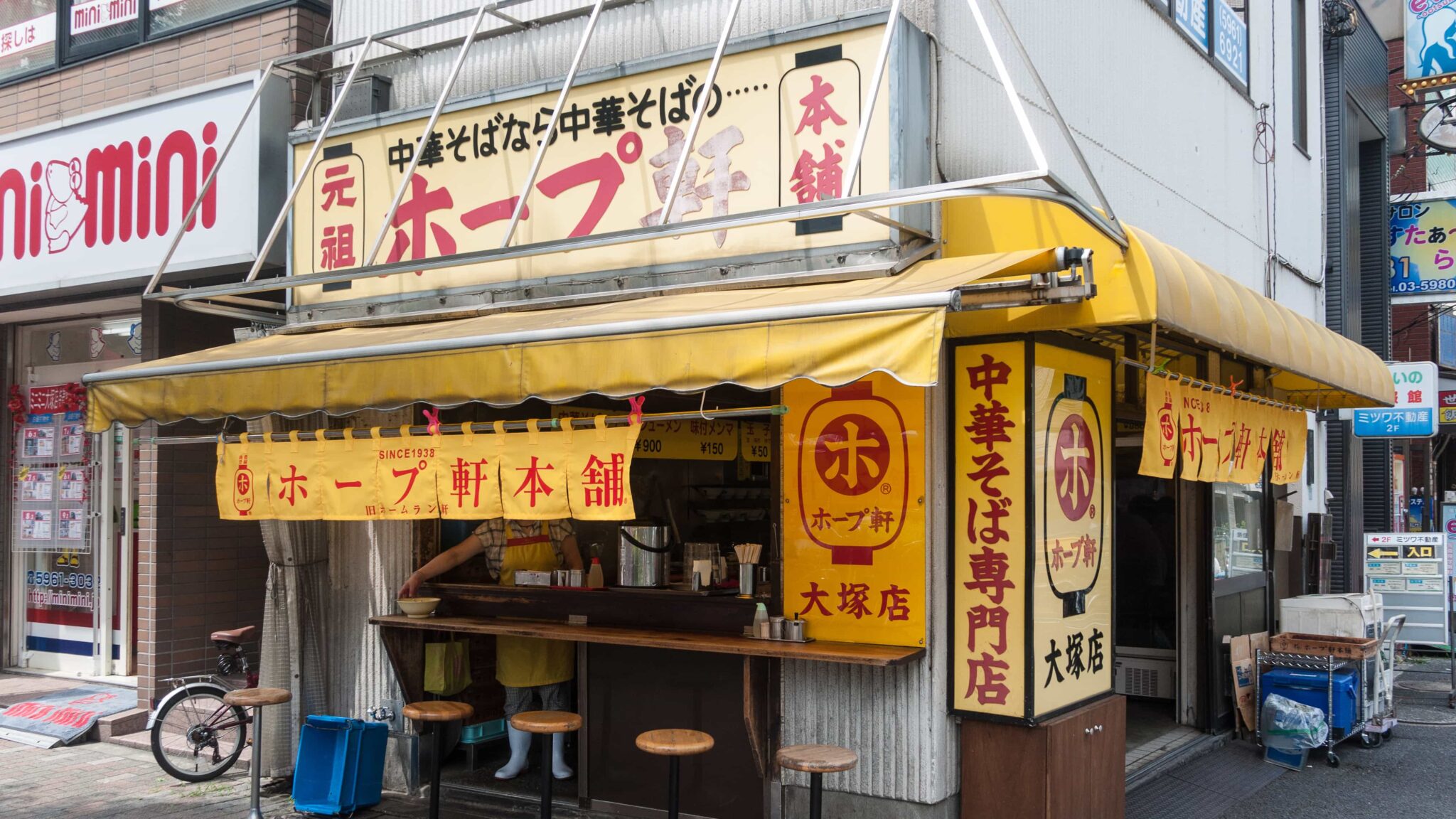
It’s worth going an extra stop further to Sugamo (巣鴨) and taking a stroll along Jizō-dōri (地蔵通), a shopping arcade that harks back to a bygone Tokyo where the average age of residents is pushing 80. While you’re there, try some of the traditional sweets on offer at one of the many old confectionary shops.
Continuing tomorrow, in Part 2, we meet Murakami the jazz café proprietor and how a game of baseball changed his life forever.

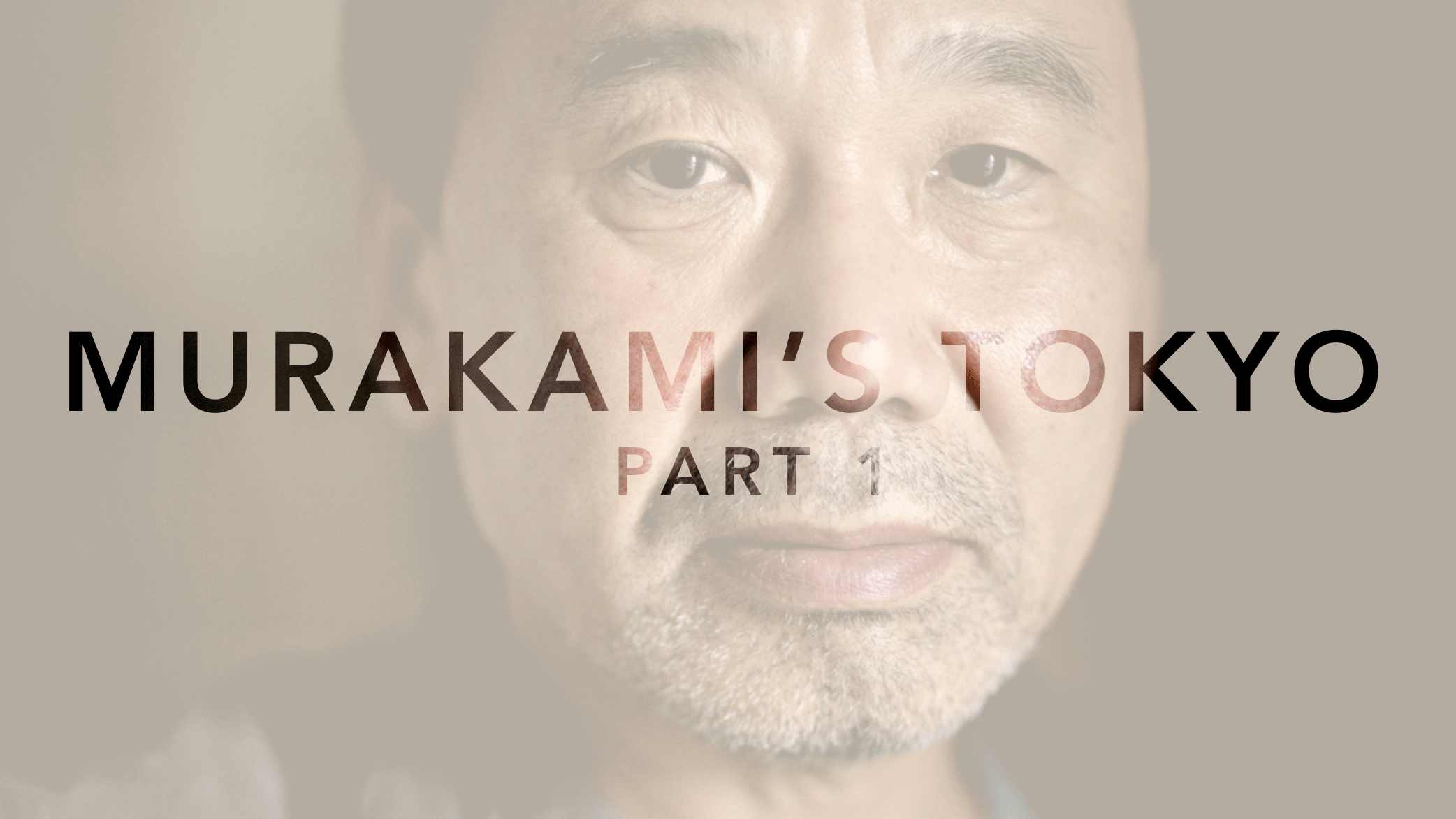
Reply